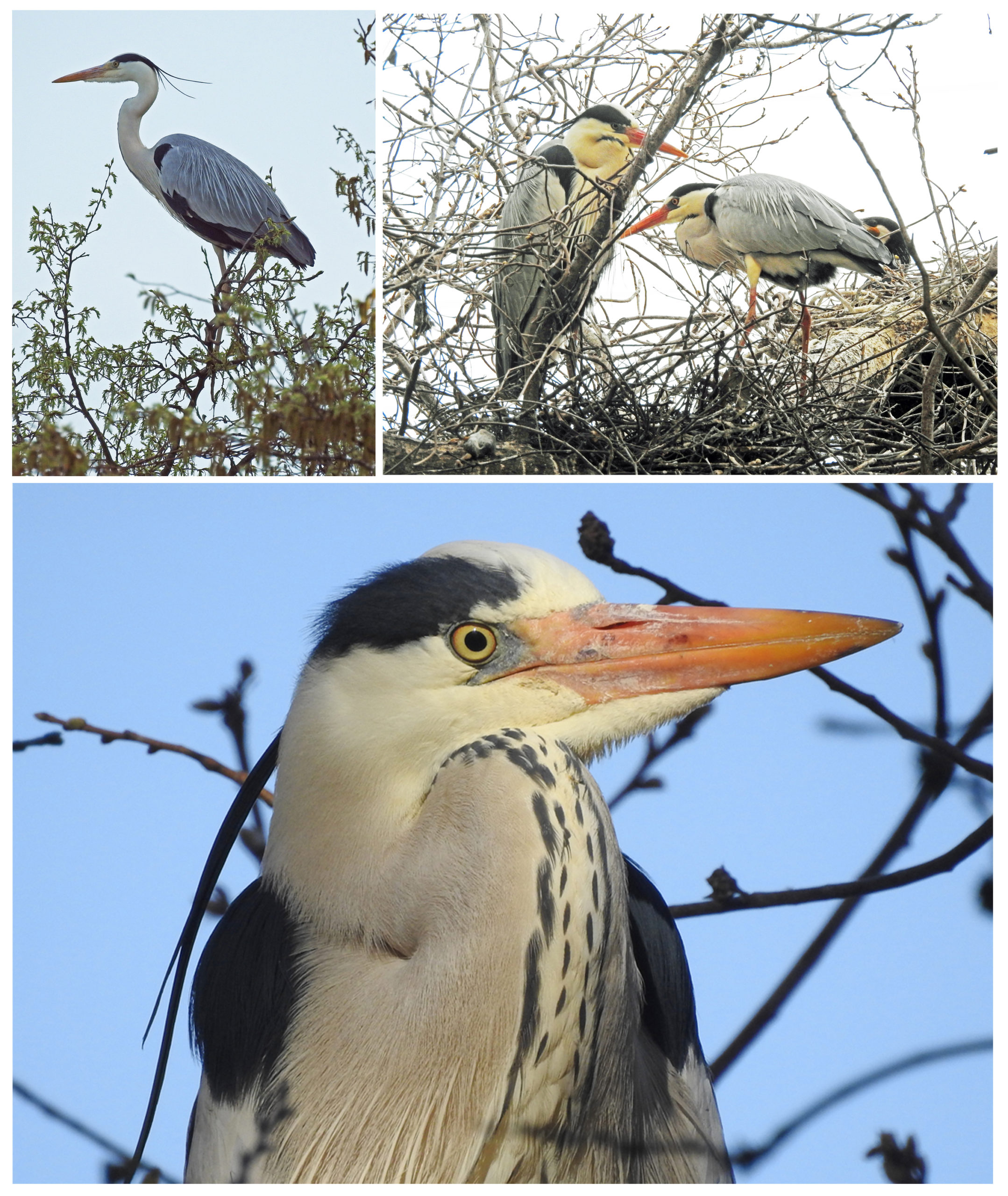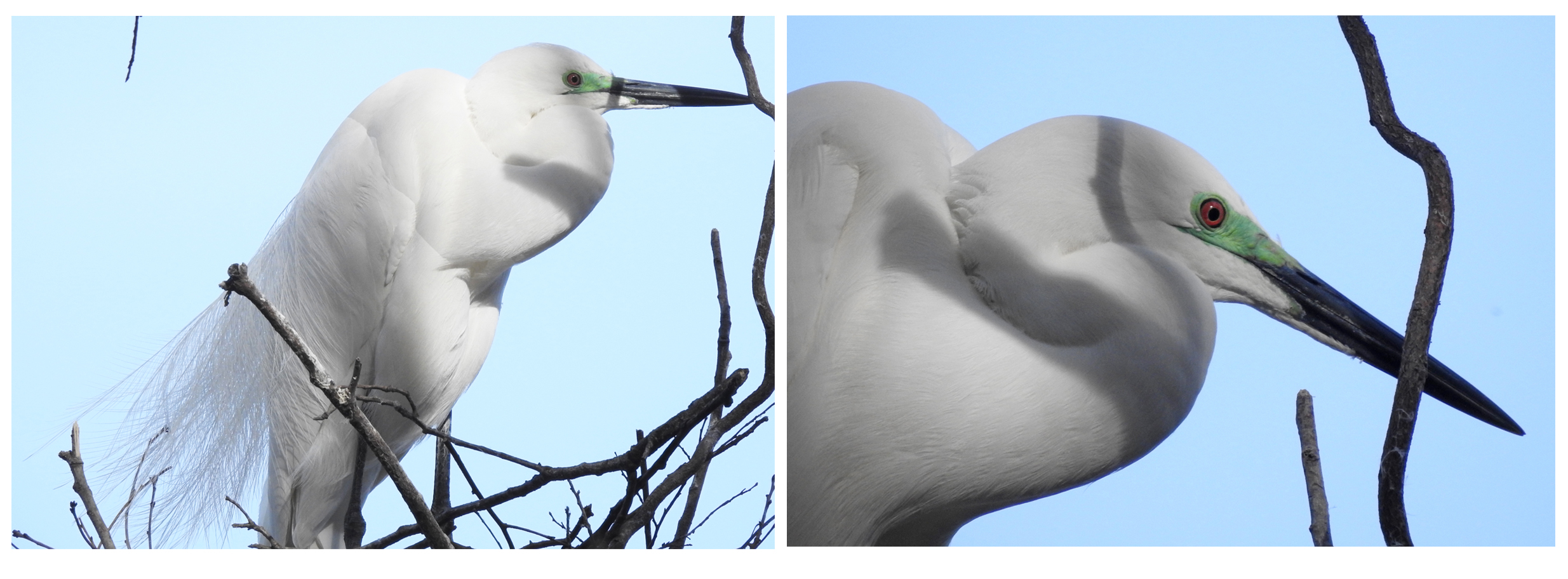March 30 Some of My Next Door Neighbors
My condominium is situated alongside a large man-made pond, constructed as a holding reservoir to prevent runoff water from the Chiba New Town streets from flooding the downstream farming areas. The pond was constructed simply by damming a narrow valley. The rice paddies were wiped out, but the city planners fortunately chose to preserve the satoyama woodlands along the valley sides intact. In addition, the edges of the pond were left natural rather than concreted over.

These civil engineering planning choices have resulted in a rich wetland ecosystem. Hundreds of duck winter on the pond; and over the past decade or so our local egrets and herons have established a sizable breeding colony on the slope woodlands. The larger species like to get an early start, and both grey herons and great egrets are currently hauling in sticks to complete their huge nests.
The grey heron, called aosagi or ‘blue-heron’ in Japanese, has a white head with a broad black stripe above the eye and several black crest feathers. The bill is subdued yellow in winter, but turns bright orange with the onset of the breeding season. The iris is yellow. Outside the breeding season the grey heron tends to be a nocturnal hunter, but with several fast-growing chicks to feed the birds hunt during daytime hours as well.

The great egret, called daisagi or ‘large egret’ in Japanese (the Japanese generic term sagi does not distinguish between ‘heron’ and ‘egret’), is a pure white bird, with long black legs and delicate lace-like plumes on both the back and chest. The bill is yellow in winter but turns black in spring. The lores, which are the patches of bare skin between the eyes and the base of the bill, are a beautiful bluish-green color.

